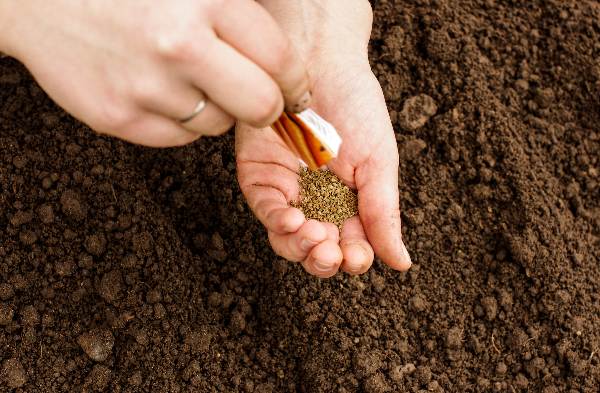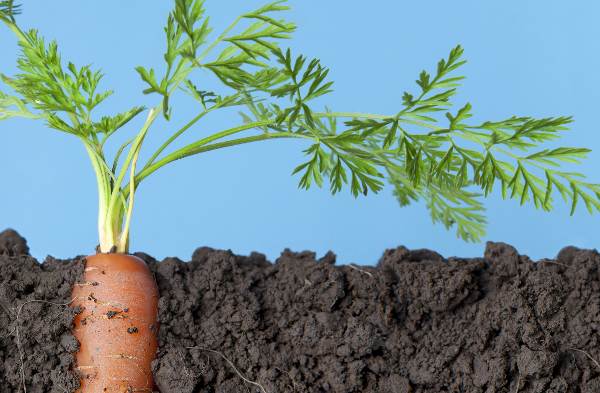Choosing a plot
Carrots really are a very easy-going vegetable, able to adjust even to cooler temperatures. However, the quality of your soil really does make all the difference between harvesting a strong, healthy carrot or a pathetic 3 inch specimen.
Carrots grow best in light, sandy soil. If you have heavy, clay-clogged soil then I would recommend digging over your soil a few weeks before planting, just to loosen any dense clods or small rocks. I would also check the soil’s pH – carrots usually thrive if the soil’s pH level is neutral, somewhere between 5.5 and 7.0.
If you plan on growing carrots in containers, I would suggest going for a mini carrot variety, such as Babette or Romeo. Make sure you choose a container that’s at least 8 inches deep and make sure you fill it with high quality soil to within an inch of the top.
Planting seeds

Carrot seeds should be planted as thinly as possible to reduce the need for further thinning later, and to discourage pests. I would choose a dry, sunny day to plant – preferably around spring/summer between March and July.
Aim for a depth of half an inch and leave 2 inches between each drill. If you have to, don’t hesitate to protect your crop with a cloth or cover-up, especially if you are planting your seeds later on in the year. Make sure you water your seedlings well until they start to germinate.
If you are planting your seeds indoors, try to leave as much space as possible, although later you may still need to clip out any extra seedlings.
Nurturing your seeds

Carrots take around 12-16 weeks to mature from seed to harvesting. During this time, one of your biggest problems will probably be carrot flies. Attracted to foliage, it’s important to make sure that you thin your crop regularly and clear up any excess leftovers to detract the pests.
As your seeds start to germinate, it’s important not to water them too much. Carrots are naturally drought-resistant so if you are growing them outdoors in the UK, the weekly rainfall should be enough to keep them hydrated. If not, I’d recommend watering them between 1-2 weeks, perhaps slightly more if you notice any wilting.
Harvesting your carrots

You can start pulling up your carrots once they are big enough to eat. If you have started growing baby carrots, they may be ready to harvest slightly earlier than any full-grown varieties.
You can check their size by removing some of the dirt from the top layer of soil and checking the size of the root. If you planted your seeds slightly later in the year, I’d definitely try to harvest them before winter, around September-October.
If you’re afraid of harvesting more carrots than you can eat, don’t worry. Carrots can be left in the ground for up to a month after they are fully grown.





 Looking for our products in a store near you?
Looking for our products in a store near you?
